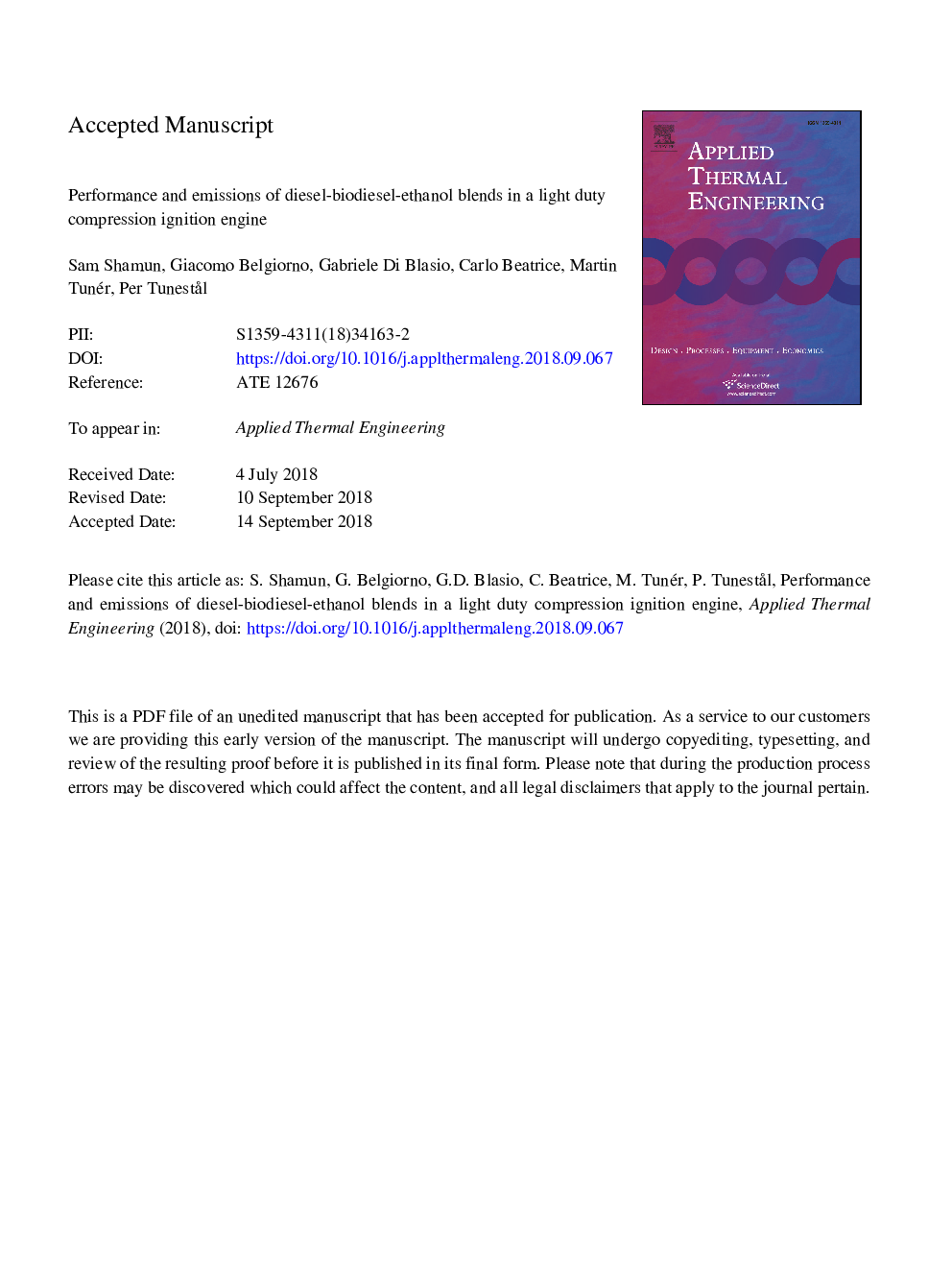| Article ID | Journal | Published Year | Pages | File Type |
|---|---|---|---|---|
| 11027946 | Applied Thermal Engineering | 2018 | 14 Pages |
Abstract
An approach to reduce CO2 emissions while simultaneously keeping the soot emissions down from compression ignition (CI) engines is to blend in short chained oxygenates into the fuel. In this work, two oxygenated fuel blends consisting of diesel, biodiesel and EtOH in the ratio of 68:17:15 and 58:14:30 has been utilized and studied in a single cylinder light duty (LD) CI engine in terms of efficiency and emissions. The reasons of utilizing biodiesel in the fuel blend is due to the emulsifying properties it has while the origin of the fuel is biomass. When performing the experiments, the control parameters were set as close as possible to the original equipment manufacturer (OEM) EU5 calibration of the multi-cylinder engine to study the possibility of using such blends in close to stock LD CI engines. The oxygenates, in particular the fuel with the higher concentration of EtOH, showed an net indicated efficiency of â¼52% at high load in comparison to diesel which never exceeded â¼48%. Regarding the emissions, several trends were observed; the soot-NOX trade-off diminished significantly when utilizing the fuel with the highest concentration of EtOH. The charge cooling effect reduces the NOX emissions while the exhaust particles are reduced both in terms of mean diameter and quantity. At lower loads, the THC and CO emissions were higher for the oxygenated blends than for the diesel due to the earlier mentioned charge cooling negatively affecting the combustion process. However, this trend seized at the higher loads when the in-cylinder temperature is higher and oxidation of the fuel is enhanced.
Keywords
ηcNet Indicated Mean Effective PressureISECFSNEGRSMECA50aTDCBMEPNEDCTHCISFCbTDCNOxflame ionization detectorEthanolcompression ignitionEmissionsResearch Octane NumberEfficiencythermal efficiencyafter top dead centerbrake mean effective pressureparticle numberspark ignitionMaximum Pressure Rise RateFIDDieselparticulate matterCombustion efficiencyRONoriginal equipment manufacturerFAMEbefore top dead centerFatty acid methyl esterIndicated Specific Fuel ConsumptionOEMnew European driving cycleTotal hydrocarbonsexhaust gas recirculation
Related Topics
Physical Sciences and Engineering
Chemical Engineering
Fluid Flow and Transfer Processes
Authors
Sam Shamun, Giacomo Belgiorno, Gabriele Di Blasio, Carlo Beatrice, Martin Tunér, Per TunestÃ¥l,
